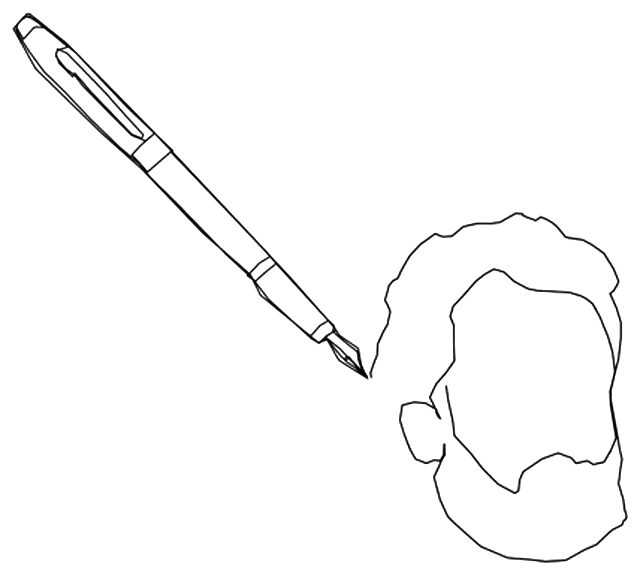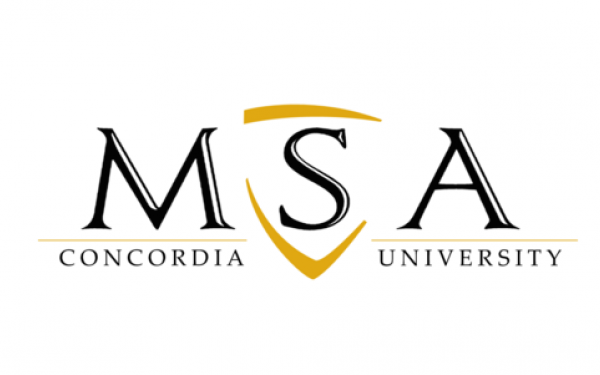To draw or not to draw
The Link looks at the draw Muhammad debate
Everybody Draw Muhammad Day, held on May 20, spawned a clash of ideals. The day was initiated by the censorship of an episode of American television show, South Park titled “201” for depicting the prophet Muhammad—an act that is blasphemous to Islam.
Radical Muslims reacted by sending death threats to the creators of South Park and those that felt their freedom of speech was threatened reacted by drawing a plethora of pictures. With the extreme reactions on both sides of the debate, should we have a day dedicated to drawing the Muslim prophet Muhammad?
To Draw
By Elaine Ball
On May 17, I received an email calling for secular groups nationwide to join in solidarity with the University of Illinois, University of Wisconsin, and Northwestern University to participate in Everybody Draw Muhammad Day on May 20.
This was in response to death threats received by South Park creators Trey Parker and Matt Stone for depicting the Muslim prophet Muhammad speaking. According to an interpretation of the Qur’an, people of the Muslim faith are not allowed to portray the prophet Muhammad in any way.
But, who is to say everyone isn’t allowed to draw the prophet?
My colleagues and I at Secular Humanism, Inquiry and Free Thought partook in a Draw Muhammad Campaign by drawing stick figures insinuating its identity as Muhammad, but with no real resemblance. The idea was to sway dialogue away from the actual drawing Muhammad and promote freedom of expression.
The SHIFT team had this conversation during our weekly meetings and most of our members agreed that there should be an “Everybody Draw Muhammad Day” because people all over the world should not be afraid to exercise their rights to free speech when radical Muslims threaten death.
“We should show them that we are not afraid of them,” was the general response I heard.
I think, however, that we should not play their games. We should draw Muhammad on other days, all throughout the year. If everyone draws Muhammad on this one day, then great, no radical Muslims will kill us on that day, but what about other days?
The fact remains, however, that a few radical Muslims sending death threats is not indicative of the entire Muslim population. Take the reaction of the Muslim Student Association at the University of Wisconsin-Madison as an example. They drew boxing gloves on the chalk stick figures and wrote “Ali” next to the label “Muhammad.” That’s far from a death threat! It’s clever and amusing.
We can have these dialogues throughout our school years, drawing attention to our groups, making it clear that we aren’t “afraid” of anything, while offering information and education to our campus communities. Why burn bridges of communication and understanding instead of building each other up?
Why bother?
By Diego Pelaez Gaetz
I claim no religious affiliations whatsoever. Much like John Lennon, I imagine a utopia where outdated religious ideologies don’t hold sway over serious decision-making.
So it is not from a place of being offended that I can say that I abhor Draw Muhammad Day and cartoonists who think they are crusaders for free speech because they present a (usually stereotypical) depiction of an Arab guy by the name of Muhammad. The notion that cartoon doodling can be equated with real religious activism is what offends me.
Just to be clear, I also don’t think people should be subject to death threats for depicting an image of Muhammad. I do enjoy South Park, and empathize with the creators, who were the subject of death threats after depicting Muhammad in their 200th episode. I’m pretty sure their depiction of Muhammad wasn’t included to create international controversy, and for it to be received as such is puzzling—not just from the Muslim community, but from the mainstream media as well. Especially since South Park had already ran an episode featuring Muhammad in 2001 with very little public response.
But we can’t forget where the draw-Muhammad controversy originated; in 2005 a notoriously anti-immigrant newspaper in Denmark tried to stir up some interest in their publication with a series of cartoons depicting the prophet. In a scarce media market, reactionary devout Muslims are an easy target for creating controversy, which is why pretty much every major media outlet played up the story for weeks.
Though the paper claimed that the cartoons were with the intention of “adding to the discourse,” the reality is that they were an overtly antagonistic gesture to the Muslim community in Denmark without any real artistic merit.
It’s hard to believe that Draw Muhammad Day was intended with the wellbeing of Muslim communities around the world at heart. Yes, I understand the noble notion of showing radical Muslim groups that we are “not afraid of them,” but that’s easy enough to say from the comfort of your computer desk.
The reality is that Draw Muhammad Day does nothing at all for people suffering under oppressive Islamic dictatorships except exacerbate the antagonistic relationship between the western and Islamic world. This kind of combative discourse only helps extremists on both sides of the debate to drum up resentment and find reason for armed conflict.
One final point: if you want to draw Muhammad, feel free. Draw him in compromising positions, going to work, dressed up as a police officer—have at it. Just don’t waste my time with a faux-radical “day,” which is basically a Western-centric circle-jerk.
This article originally appeared in Volume 31, Issue 1, published June 11, 2010.


_600_832_s.png)


_600_375_90_s_c1.jpg)
_600_375_90_s_c1.jpg)